🦜🌊⛱️*₊ ° . ☆ 19 | 🇺🇸🇲🇽 | ♋️ ☆ . ° ₊ *Brasil Hyperfixation Blog 🇧🇷🩷💜💙
Don't wanna be here? Send us removal request.
Text
This is so embarrassing


#brasil#brazil#brazilian culture#cultura brasileira#português#hyperfixation#adhd#neurodivergent#autism#jose carioca
8 notes
·
View notes
Text

Casa típica do interior nordestino
108 notes
·
View notes
Text
IPÊ AMARELO APPRECIATION POST



I LOVE YOU GIRL
693 notes
·
View notes
Text
Introdução/Introduction
Apenas um mexicano neurodivergente de 19 anos com uma hiperfixação na cultura brasileira 🙌🏼
Just a 19 year old neurodivergent Mexican with a hyperfixation on Brazilian culture 🙌🏼
Vou usar este blog para praticar meu português e aprender mais sobre a cultura e a mídia brasileiras! Tenha um bom dia! ☀️🫶🏼
I’ll be using this blog to practice my Portuguese skills, and to learn more about Brazilian culture and media! Have a nice day! ☀️🫶🏼
#brazilian culture#brazil#brasil#português#portuguese#neurodivergent#hyperfixation#cultura brasileira
6 notes
·
View notes
Text
There are a lot of different traditions during Carnaval, but the allegoric cars players have been building are known to be part of the Parade of the Samba Schools, so I thought I'd explain how it works!
For starters, the Parade is a competition. Each team is called a samba school and they have their own flag and history. People can be really hard or die for their teams! Some are connected to soccer teams, like Gaviões da Fiel (the school) is connected to Corinthians. The two main parades (of this type of carnaval) happen in São Paulo and Rio de Janeiro.
Each school has one hour to completely walk across the sambódromo, and in that hour they have to tell a story or message. That is one of the things they are judged on! The criteria are the drums, the samba-enredo (enredo literally means plot, but this is a genre of samba), the evolution (how the story develops), the harmony (is everyone singing together? Do the people in the parade know the lyrics?), the plot itself, the allegoric cars and accessories, the costumes, the opening act, and the mestre-sala and porta-bandeira.
The parade is divided into sections called alas, and each one of them functions as a chapter in the story being told and have their own separate choreography. The first one is the Comissão de Frente (the opening act). They set the tone for the rest of the team and the public, so it’s common to see celebrities here to get the audience hyped.
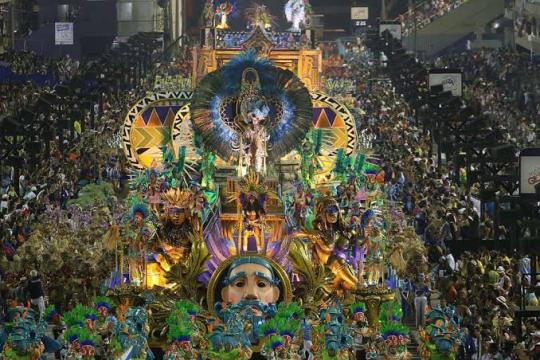
Another crucial part is the drums. They are setting the beat that everyone is dancing to, so they shouldn’t make any mistakes. To both hype them and keep the pacing is the Rainha da Bateria (the Queen of the Drums). She’s a woman dancing samba in very minimal clothing but very heavy accessories. This is a very prestigious spot, the dream of any passista (this is what the samba dancers are called). Since they are the face of the parade, celebrities are sometimes given the position, and not all of them deserve it.

There are other passistas atop the allegoric cars, but they are not the only type of dancers. There’s the Ala das Baianas (ala of the baiana women): older (usually black but not necessarily) women dancing in traditional clothing. Honestly one of my favorite parts of the parades.

But my favorite part is the mestre-sala and porta-bandeira. There are several throughout the parade, but only the first one is graded. They are a couple: the man is the mestre-sala dancing around the porta-bandeira (literally 'flag carrier'), who dances with the school flag, and wears a big skirt, usually in the school colors. I wanted to be one when I was a kid, they dance doing twirls and it just looked like so much fun.
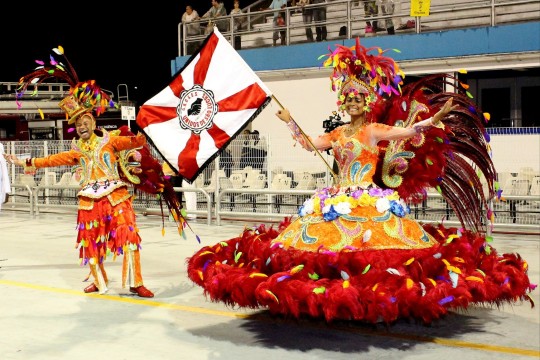
There are other unnamed alas, of course, and the allegoric cars.
The samba schools are very tied to black history and black communities, so their stories are usually very powerful. Like the year they represented a former president as a blood sucking vampire with the presidential sash, or this year, where they showed a statue of a known slaver graffited and on fire. Seriously, some of these cars are insane, and most of them have moving parts while also being light enough to be pushed or motored across the sambódromo, but sturdy enough to support all the dancers on top of it. A true feat of engineering! See the size of the woman near the statue's feet compared to the whole thing?
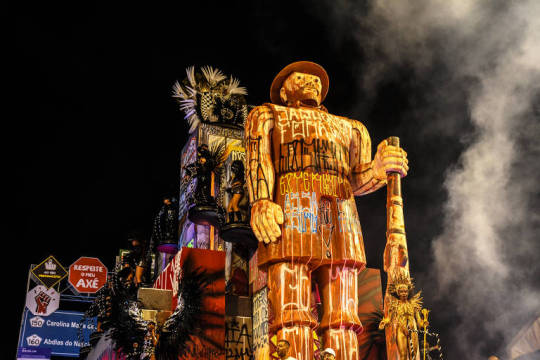
Most people celebrate carnaval by going to street parties called "bloco de carnaval" (basically a mini parade with live music), but these huge parade still get a big audience, despite streaming so late at night.
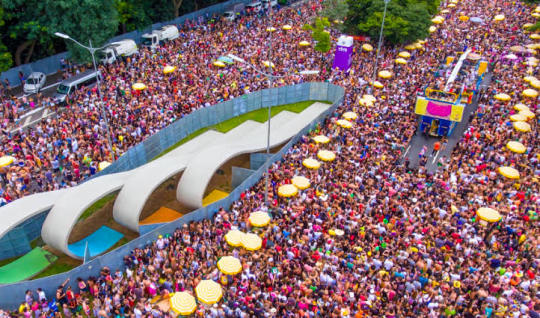
Here's this year's presentation from Vai-Vai if you're curious to see everything in motion! Originally, I had put a link to Estácio de Sá's presentation, but some politicians want to apply sanctions to Vai-Vai because it represented cops as demons. A few days later, a white man attempted to kill a black man, and the black man was arrested despite witnesses telling the cops what really happened. When news broke out, they kept him in prison on claims of "resisting arrest." So, why is it wrong to say cops are devils?
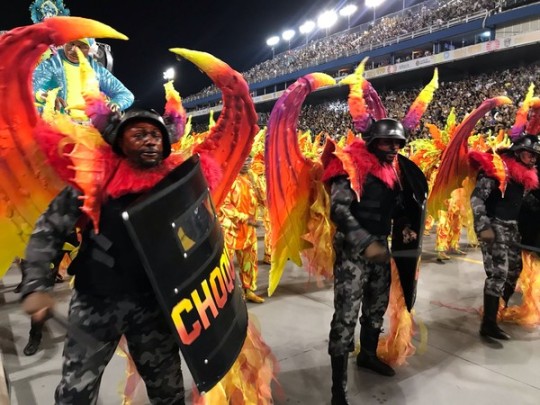
Anyways, the Vai-Vai presentation is about celebrating blackness and black creativity and resilience. Happy Carnaval! The winners this year were Mocidade Alegre in São Paulo and Unidos da Viradouro in Rio de Janeiro. You can look up their presentations if you want to.
youtube
455 notes
·
View notes
Text
Rio Carnival, Rio de Janeiro, Brazil: The Carnival in Rio de Janeiro is a festival held every year before Lent; it is considered the biggest celebration of Carnival in the world, with two million people per day on the streets. The first Carnival festival in Rio occurred in 1723. The typical Rio Carnival parade is filled with revelers, floats, and adornments from numerous samba schools which are located in Rio. Wikipedia
294 notes
·
View notes
